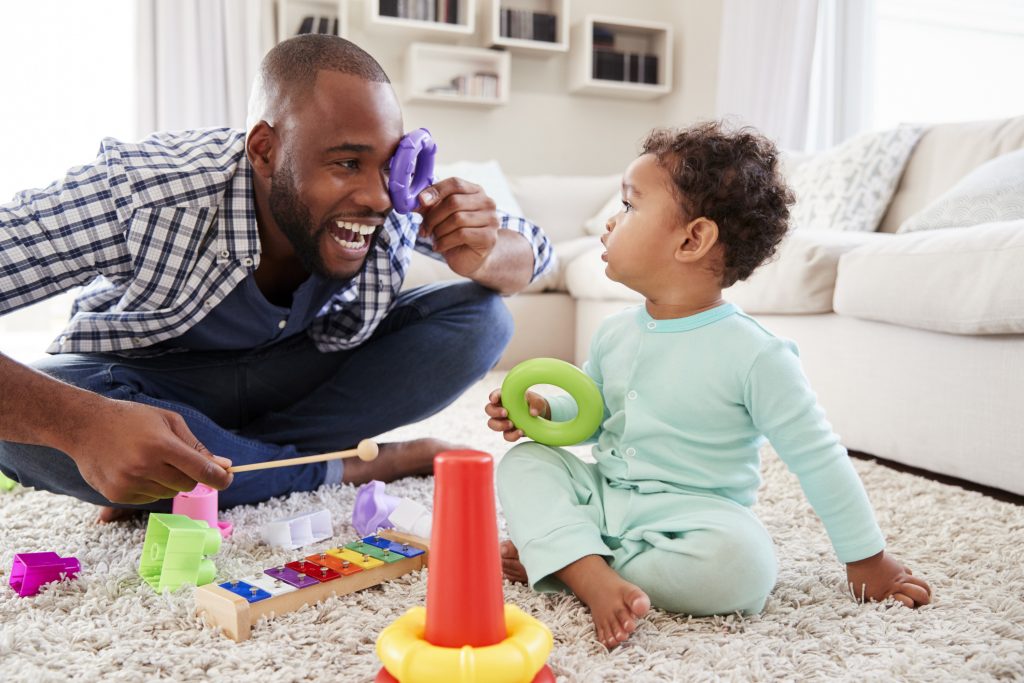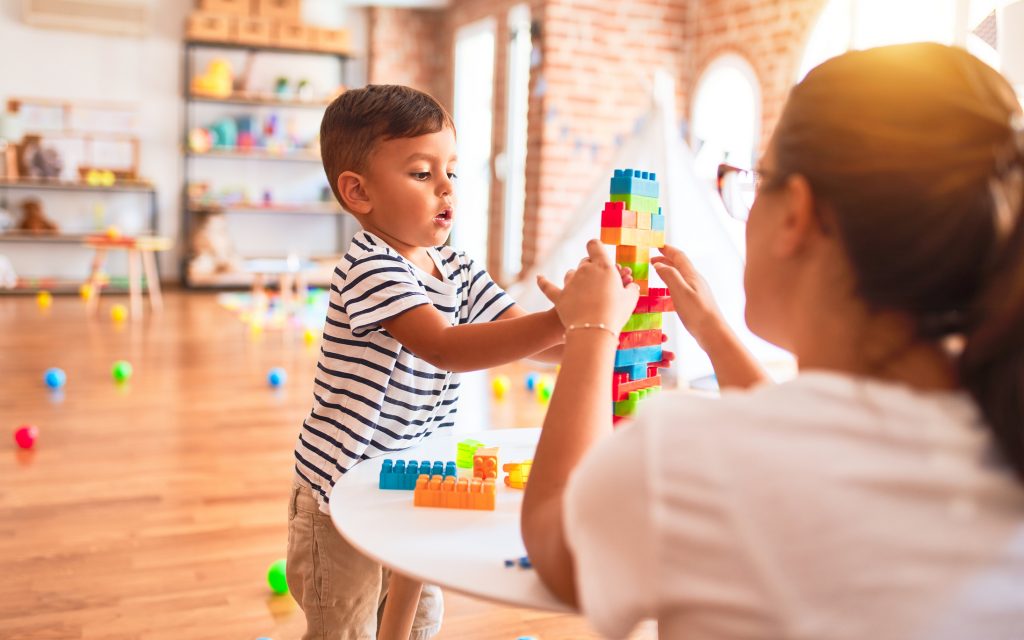Some individuals with autism often have difficulty engaging socially with other people. This can make it more difficult for them to learn from others by watching and listening. Adding in a few strategies to your everyday routines can help them learn that people are fun and worth paying attention to!
- Use their interests to your advantage! Take time to observe your child in play and find what is motivating, such as characters, colors, textures, or sounds that capture his/her attention. Use these motivating items as the center of your interactions. This way, you are working with items that can capture your child’s attention.
 |
- Position yourself so that you are facing your child, with the object between you. This way, the child is already looking towards you and it will be easier for them to look up and smile at you! You can use the object in a playful manner to grab and keep their attention. For example, take a ball and place it on your head while making an excited expression, and then say, “Ahh choo” as it falls onto the floor. Continue to repeat the sequence, making sure to pause before and after saying, “Ahh choo” to give your child an opportunity to imitate you or join in on the fun.
|
- Eliminate the competition! Look around you and see what might be pulling your child’s attention away from you. Minimize these distractions by putting them in a bin or covering them with a blanket during times you are focusing on engagement.
|
 |
Helpful Hints:
- Try to follow your child’s lead. First, sit back and watch your child play to see where you could add a fun sound effect or facial expression!
- For example, while observing your child play with blocks you notice that he/she is are putting them into a bin and dumping them on the floor. As your child puts blocks into the bin, place yourself in front of your child, and as they begin to dump them out, add a “Kaaaaboooom” sound effect with an excited facial expression. Now, repeat that sequence again. You may find your child enjoys when you are more animated with your facial expressions and body movements.
 |
- While you are watching your child play, think about what they are trying to do. Join your child in play by helping them reach the goal. This could be by handing another toy or helping stabilize the block tower. Look for ways where you can add to what they are already doing.
|
- Avoid taking away the object for “your turn.” Instead, use a similar or identical object and imitate what your child is doing with their object. This is an easy way to bring their focus from the object to you.
- Narrate the actions with short, simple language. As your child is stacking blocks, you can say, “big block” or “red block”. If your child is playing with cars, you can say, “fast car” or “vroom.” You may feel like a sportscaster, but this is a great way to help your child increase their understanding of language. By adding simple words and short phrases on top of their play, you are helping them to make the connection between words and what they mean.
|
 |
In times of uncertainty, everyone benefits from predictability!



